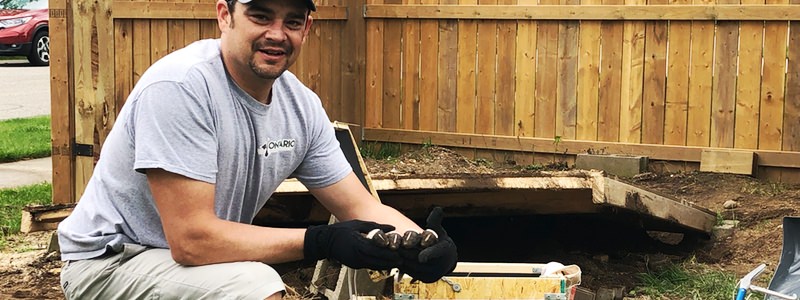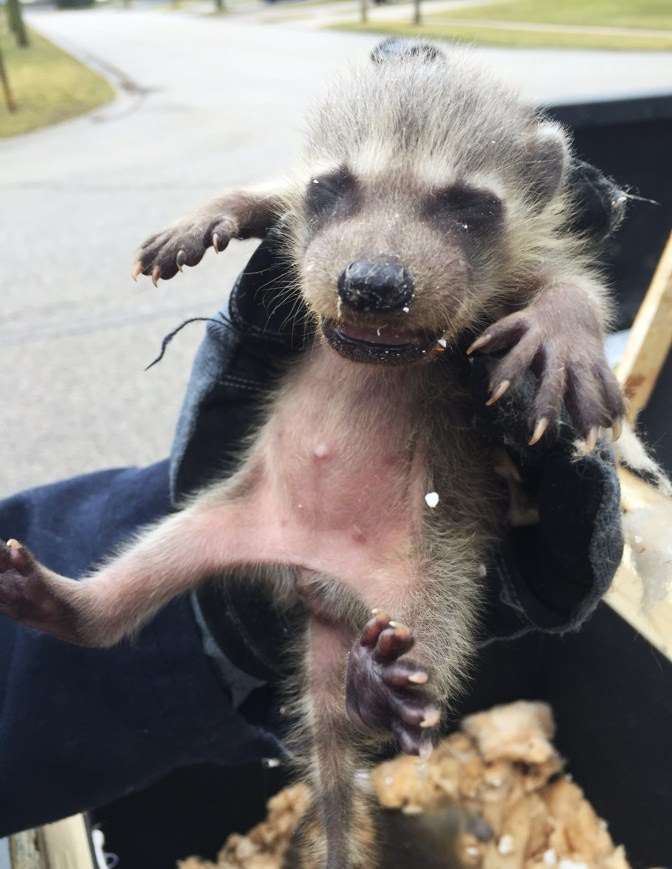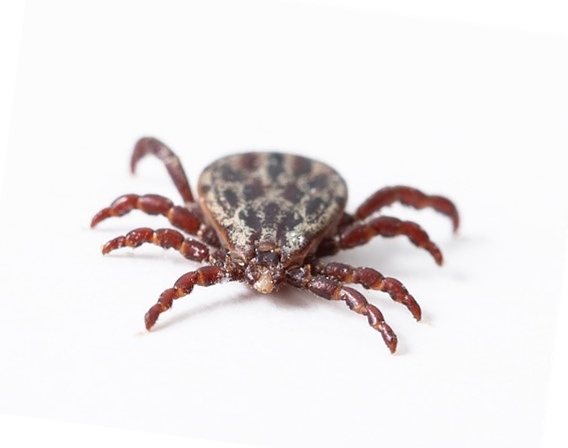
Why Humane Animal Removal Is Better Than Poisoning or Extermination
Posted by Jared Houliston Thursday, June 25th, 2020 | 6,464 Reads
A lot of customers ask us why we provide a humane animal removal service instead of simply killing the animal and getting the job done as fast as possible. It’s a good question and one that we get all the time, so we’ve decided to detail the reasons below.
 Why wouldn’t we exterminate the animal if that’s all it takes to get it out of an attic or home?
Why wouldn’t we exterminate the animal if that’s all it takes to get it out of an attic or home?
We completely understand the question, and over the years we’ve even had customers that preferred it if we handled their wildlife issues by simply exterminating the animals; they think it’s faster than going through the process of removing them humanely, but in fact it takes longer and it’s a slow, inhumane process that usually results in a cruel death.
If we were to simply lay traps or attempt to poison the animals, these actions are not going to get rid of the problem quickly. Here’s why:
- it can actually take days or weeks to capture a wild animal.
- by trapping, babies are usually left behind to die.
- the wildlife may not take the bait.
- they may avoid the traps all together.
- traps and poison don’t fix underlying issues e.g. the holes around the home.
- traps create a slow, long and cruel death for the animal.
- contamination develops from the decaying animal carcass.
- they may roll the traps over or destroy them.
- extreme weather exposure could unduly torture the trapped animal.
To many people, killing the animal appears to be the easiest way of dealing with wildlife issues, but the fact is that it does take longer, and it’s a cruel practice. The extermination process adversely affects the environment, and in most areas of Ontario, trapping and relocating is against the law.
There are also a number of significant drawbacks to killing wildlife instead of removing them and letting them relocate themselves and their babies on their own. We’ve laid out those reasons for you below.
It’s not cheaper to kill the animal
The home owner that would prefer that their animal problems are fixed through extermination are generally looking for a solution that’s quick and hopefully cheaper. Understandably, these type of customers just want a quick and easy fix that they think won’t take much time, and will allow them to get on with the rest of their day.
These customers also usually never opt-in for wildlife prevention services, which means the animal entry points are never sealed up. This constant exposure leaves the home open for future entries by the same animal or other forms of wildlife.
Humane animal removal involves a process that ensures the animal’s life is preserved and that the home is sealed off from future entries. For instance, see what actually needs to be done to keep wildlife out of a home and discover the extent of the work required in order to reduce the chances of future animal break-ins.
Wild animals support the ecosystem
One of the reasons we treat each and every animal we remove from a home humanely is because they’re needed in order to positively contribute to the local ecosystem. Each species’ existence is reliant on the other for survival. Another reason is because we generally care about the conservation of the wildlife we deal with, and the environment we live in.
Wild animals regulate insect populations
 Insectivorous species of wildlife like skunks, squirrels, opossums, raccoons, birds and bats constantly consume insects – the insects we fear and dread the most, such as:
Insectivorous species of wildlife like skunks, squirrels, opossums, raccoons, birds and bats constantly consume insects – the insects we fear and dread the most, such as:
- June bugs (Phyllophaga)
- wasps (Hymenoptera)
- crickets
- Earwigs (Dermaptera)
- caterpillars
- grasshoppers
- beetles
- ticks
- spiders
- termites (Termitoidae)
Collectively, these insectivorous wildlife species also consume large quantities of insect larvae, various winged bugs, moths, mosquitoes, injured insects and cockroaches. When we preserve these wildlife populations, it keeps insect populations in check, and helps maintain a balanced environmental ecosystem.
Also, if every animal removal company engaged in extermination or deadly trapping practices, it’s quite probable that over time some of the common animals we remove, could become endangered while we run the risk of putting their natural habitats in jeopardy too. Current problems in bats populations are a perfect example of how trapping can lead to causing an animal to become endangered.
Problems that can arise without insect population regulation
Without insect population regulation that naturally occurs in the wild, there would be an excess of insects. Farmer’s crops would be in danger and the ecological imbalances could put humans and pets at risk of more frequently contracting insect-borne diseases. Some of these diseases include:
- lyme disease
- Zika fever
- Meningitis
- Arbovirus
- Yellow fever
- Tick-borne encephalitis
Excessive leaf-eating insect populations have also been known to damage and reduce plant growth; they increase the need to use environmentally dangerous pesticides; they can cause excessive damage to the structure of homes (termites), and they negatively affect people with certain allergies.
According to the Encyclopedia Britannica:
Insects are responsible for two major kinds of damage to growing crops. First is direct injury done to the plant by the feeding insect, which eats leaves or burrows in stems, fruit, or roots. There are hundreds of pest species of this type, both in larvae and adults, among orthopterans, homopterans, heteropterans, coleopterans, lepidopterans, and dipterans. The second type is indirect damage in which the insect itself does little or no harm but transmits a bacterial, viral, or fungal infection into a crop. Examples include the viral diseases of sugar beets and potatoes, carried from plant to plant by aphids. (source)
A study that came out of Brazil in 2008 found great importance in insectivorous bats:
[Bats] may enhance the economic value of agricultural systems by reducing the frequency of required spraying and delaying the ultimate need for new pesticides (source)
It’s clear that we need to ensure that we preserve wildlife populations in order to keep the insect populations down, and to keep them in check. A humane approach to wildlife removal and pest control does just that, and it allows nature to take its course which is more beneficial than frivolously taking the lives of animals without consideration for the effect on the environment.
Wildlife distribute seeds throughout the ecosystem
The presence of various species of wild animals not only keep the environment balanced, but by their day to day foraging, playing and travelling, they help distribute seeds (epizoochory) throughout the areas they visit.
Without seed dispersion, certain plant and tree species could see a reduction in their numbers which is especially true for areas where certain trees clearly depend on the existence of certain animals.
Wild animals help distribute seeds by carrying them from place to place on their bodies, and after eating seed bearing plants they distribute the seeds from their droppings (endozoochory). It’s also been found that wild animals help spread pollen too, which substantially helps in plant reproduction.
It’s against the law to kill certain animals in Canada
There are quite a few species of animals in Canada that are considered protected under the Species at Risk Act (SARA). There are quite a few bat species which are protected, and a considerable number of protected bird species too.
It’s against the law to kill the following animals (except in certain circumstances) even if they’ve been found to have intruded into your attic, because they are protected under the Species at Risk Act:
- several common bat species
- several bird species
- several snake species
- various lizards
Drawbacks of live-trapping and relocating
Live-trapping is the act of capturing, or trapping an animal that’s in your home or attic, and relocating it to foreign habitat. At the first view, it appears that this practice is humane, but there are quite a few drawbacks to relocation, and doing so substantially puts the animal at risk of death. A few of the obvious drawbacks are:
- animals placed in traps for prolonged periods of time exhibit signs of extreme stress
- wildlife forcefully exposed to extreme heat or cold can die from exposure
- trapping can lead the animal to become separated from it’s young
- relocating forces the animal to find new shelter and food sources in unfamiliar territory
- territorial disputes could put unfamiliar animals at risk of injury or death
- they can spread diseases like rabies and distemper to other neighbouring habitats
In Canada, illegal live trapping and relocating can lead to animal cruelty charges under the OSPCA Act of Ontario.
Dealing With Wildlife Humanely
The most humane way of dealing with intrusive wildlife is by applying wildlife exclusion which includes:
- blocking all existing and potential entry points
- forcing the wildlife to leave the premises
- if there are babies involved, allowing the mother to retrieve them
- removing certain wildlife at the appropriate time of the year
- removing what’s attracted the animal to your home
Animals like raccoons and squirrels usually have more than one den site in the area, so letting animals leave the area on their own once they have been removed, enables them to remain within their territory. It also reduces the risk of starting over again in potentially dangerous or scarce situations.
Our animal removal process provides detailed information on how each species of wildlife is humanely removed from a home.
They eat other animals and keep their populations in check
Snakes, raccoons, squirrels, mice and rats, skunks and birds all eat other forms of wildlife, which keeps those animal populations in check too. Here are some examples:
- snakes eat such animals like frogs and mice
- raccoons each various fish, slugs, and mice (and dead animals too)
- squirrels have been documented eating small chipmunks, insects and other rodents
- skunks eat rodents, lizards, snakes and birds
- mice and rats eat lizards and other small mice
- birds eat everything from snakes, mice, lizards, slugs, insects and fish
Nature has a way of making sure the environment is balanced and it’s our job to respect this balance, appreciate it, and work hard towards keeping the environment stable.
The take home
We believe that it’s of the utmost importance that a wildlife removal company will do everything possible to treat animals humanely if they’ve found them in a home. By doing so we can all do our part to preserve their natural habitat and positively contribute to the environment too.
If you have wild animal break-in issues, make sure to call a humane animal removal company so you can contribute to making sure wild animals are treated appropriately, and as stress free as possible during the removal process.
5 Responses to “Why Humane Animal Removal Is Better Than Poisoning or Extermination”
Leave a Reply
Ontario Wildlife Removal Inc. provides wildlife removal and pest control in Southwestern Ontario, including Brantford, Kitchener-Waterloo, Cambridge, Guelph, London, Woodstock, Tillsonburg, Simcoe, Port Dover, Paris, St. George, Six Nations, Caledonia, Burlington, Waterdown, Oakville, Hamilton, Stoney Creek, Grimsby, & Niagara Region. Our methods are safe, humane and environmentally friendly. Call today to book your inspection.
Get a Pest Control Quote
Simply fill in your details below and we'll call you very shortly to discuss your issues.





Great article, This company clearly cares about wildlife, and they’re extremely knowledgeable, if I or my neighbours ever have an issue, we’re contacting Ontario Wildlife!! Beate
Thank you for the compliment and referral Beate. We’re always please to provide useful information about wildlife. Glad you enjoyed it.
I agree!! We need our wildlife to thrive to keep everything in balance a great read!! I will share
I have gone to your website looking for information about “owl houses” and haven’t found any information about them. Could you send me some contact paths?
Thanks
Hi Bill! You can follow this link on information about our owl boxes: https://www.ontariowildliferemoval.ca/owl-box/